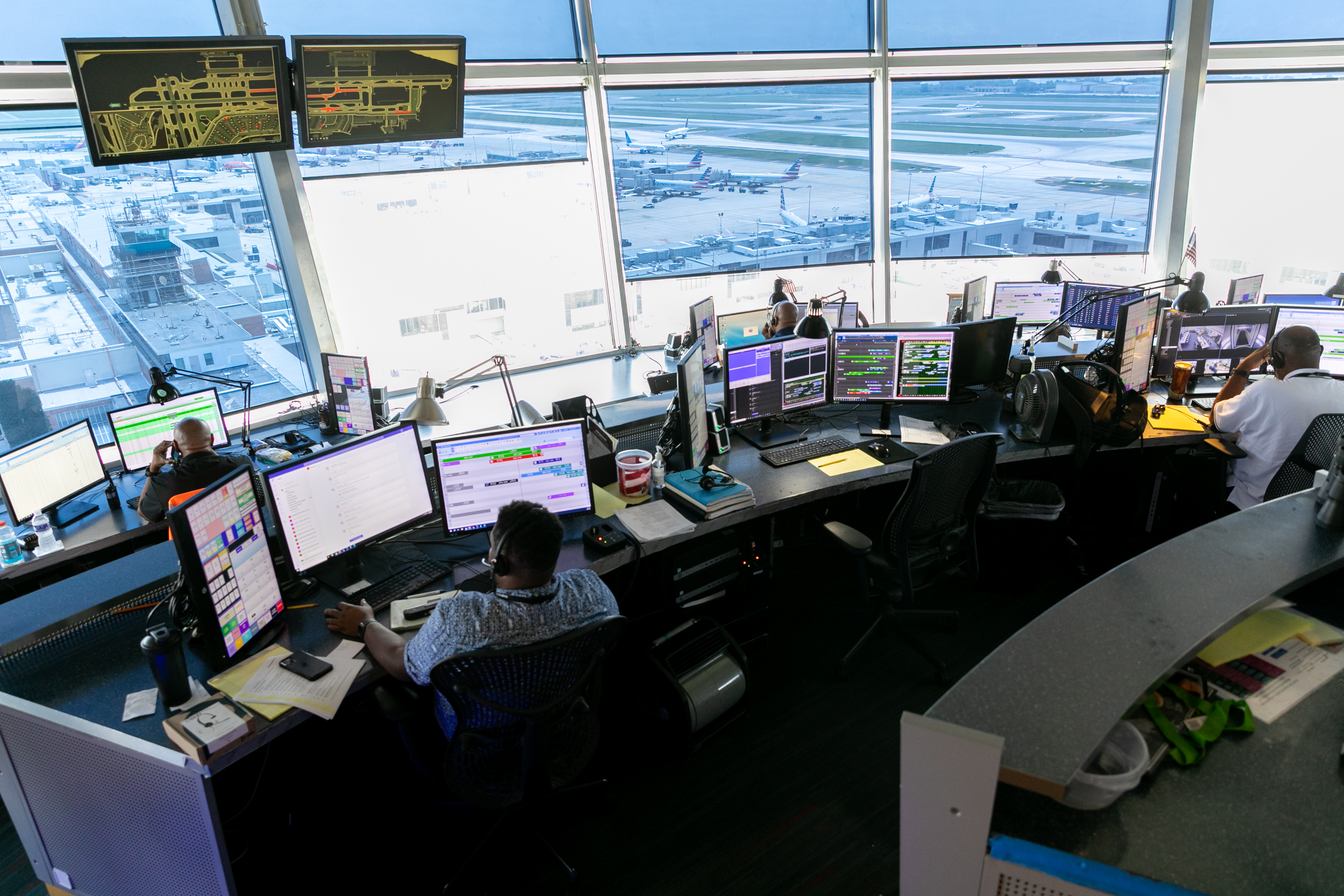Have you ever wondered what happens to the plane at the gate either after it arrives or prepares for take-off? There is a series of orchestrated events.
Arriving flights
For arriving flights, the work starts before the plane gets to the gate with the ground crew making preparations for the aircraft turnaround process. Prior to the arrival, the ground crew will load the flight schedule into a gate manager, which will give an approximate time of when flights are going to arrive and depart. As planes differ in configurations, so do the gates to accommodate all types of aircraft. The software program will always try to schedule certain planes to specific gates.
 “Our system at American Airlines tracks the aircraft and gives almost exact information about the flight - aircraft 123 is going to be there at exactly 12.01 pm. So, then we track the aircraft from the time it departs, is in the air, and as it reaches the Philadelphia TRACON [Terminal Radar Approach Control Facilities] to start landing. Also, from when the plane touches the ground, the system measures how long it’ll take a plane to taxi to the gate and whether it must wait for aircraft marshallers to bring it in,” said American Airlines Manager on Duty David Gomez. “We track all of that with technology. In case something gets off the schedule and reported, we will go to the cameras and try to find out what happened in that situation and caused the delay.”
“Our system at American Airlines tracks the aircraft and gives almost exact information about the flight - aircraft 123 is going to be there at exactly 12.01 pm. So, then we track the aircraft from the time it departs, is in the air, and as it reaches the Philadelphia TRACON [Terminal Radar Approach Control Facilities] to start landing. Also, from when the plane touches the ground, the system measures how long it’ll take a plane to taxi to the gate and whether it must wait for aircraft marshallers to bring it in,” said American Airlines Manager on Duty David Gomez. “We track all of that with technology. In case something gets off the schedule and reported, we will go to the cameras and try to find out what happened in that situation and caused the delay.”
Arrival readiness is a term used to outline the flight preparedness process. All of the processes used to turn an aircraft around are tracked and measured. Each airline establishes its own amount of time for each process. The system alerts if something is outside the parameters and the operations crew will have to find out why and what happened, analyze the process and address the issue. “There is a formula that ensures the correct timing for each process. In its calculations, it includes such criteria as the number of connecting passengers and the amount of time it’ll take the bags to get to the baggage claims,” said Gomez.
The purpose of arrival readiness is to have ramp agents at the gate 10 minutes before a plane comes in to make sure there's nothing in the general area and the loading zone is clear of any objects or debris. Gate agents should be at the gate no less than five minutes after landing to check the gate area and the jetway. Every process is timed and monitored to make sure the turnaround process is within the guidelines. “We start the clock to see how long it takes from arriving at the ramp through opening the door and getting the first bag off,” said Gomez.
As soon as the plane approaches the terminal, aircraft marshallers will assist pilots with parking the plane. Once parked and power is turned off, chocks are put around the plane's wheels to keep the aircraft from moving. From that point, multiple teams start their work simultaneously – refueling, emptying sanitary tanks, recharging, catering, and unloading bags and cargo. All of those processes may start with the passengers still on board. That's the time when the gate agent connects a jetway and opens the aircraft door for the passengers.
As explained by Gomez, “The timing is important. From the moment the aircraft stops, and the brakes are set, the goal is one minute for the bin door to be open and then, depending on the size of the aircraft, two-to-three minutes for the aircraft door to be open.” As soon as first-class deplaned, cleaners or flight crew will start the cleaning process – collecting trash, cleaning lavatories, and preparing the cabin for the next flight. Meanwhile, as luggage and cargo unloading are completed, the baggage handling crew will start re-loading for the next flight. Usually, cargo will be prepared for loading in advance, while luggage can take up some time due to the timing of the check-in process. The cut-off time for check-in and baggage drop-off is 45 minutes for domestic and one hour for international flights. This allows the baggage handling crew to have a sufficient amount of time to stage and load outbound bags on the plane.
Departing flights
Once the flight crew and the main cabin are ready, the passengers will start boarding the plane. For most airlines, all passengers must be on board 10 minutes before departure. At that time, all the bags must be in the jetway (with loading completed six minutes before departure). For international flights, bags must be matched to the passengers. If someone is late for the flight, the bag must be removed from the aircraft. As soon as the exterior turnaround processes are complete, the ground staff will confirm with the crew all the necessary information and hand over the paperwork to the captain to perform required checks. Five minutes before departure, all passengers must be seated and the aircraft doors will be closed. At two minutes before departure, the captain will call for a pushback. From that moment on and until departure, the aircraft will call the Control Center, ask for clearance and instructions for departure. The Control Center can approve simultaneous pushes depending on the location of the gate. Aircraft marshallers and the pushback tug will assist the aircraft with the gate departure (the same process will wait for the aircraft upon arrival at the next destination).
The minimum turnaround time (or minimum objective ground time) varies for different airlines and depends on the aircraft, number of passengers, and routes. For domestic flights, it is usually between 30 – 55 minutes. For international flights it is approximately 120 minutes, as additional security and maintenance checks must be performed. The faster the turnaround, the more flights the aircraft can perform.






